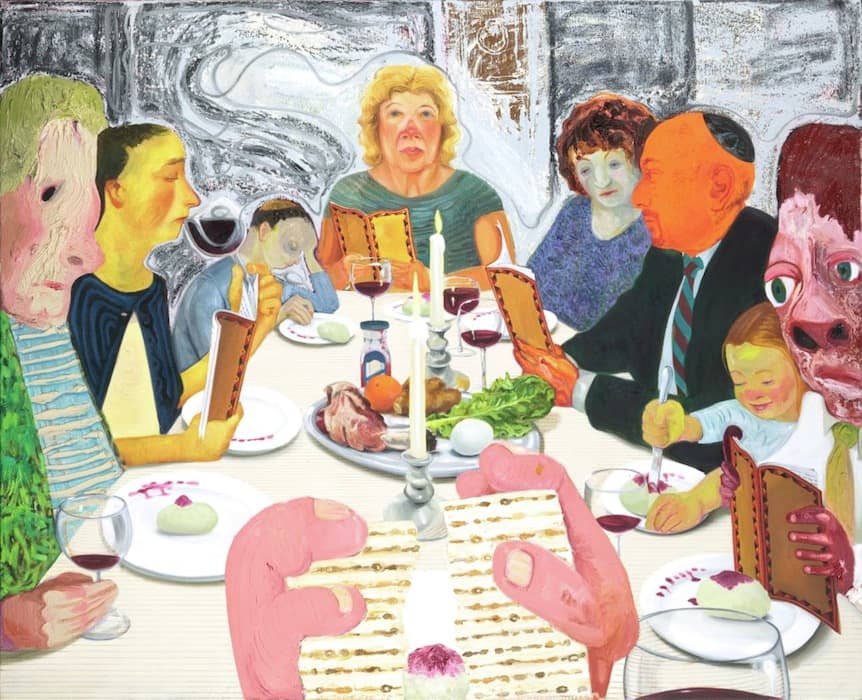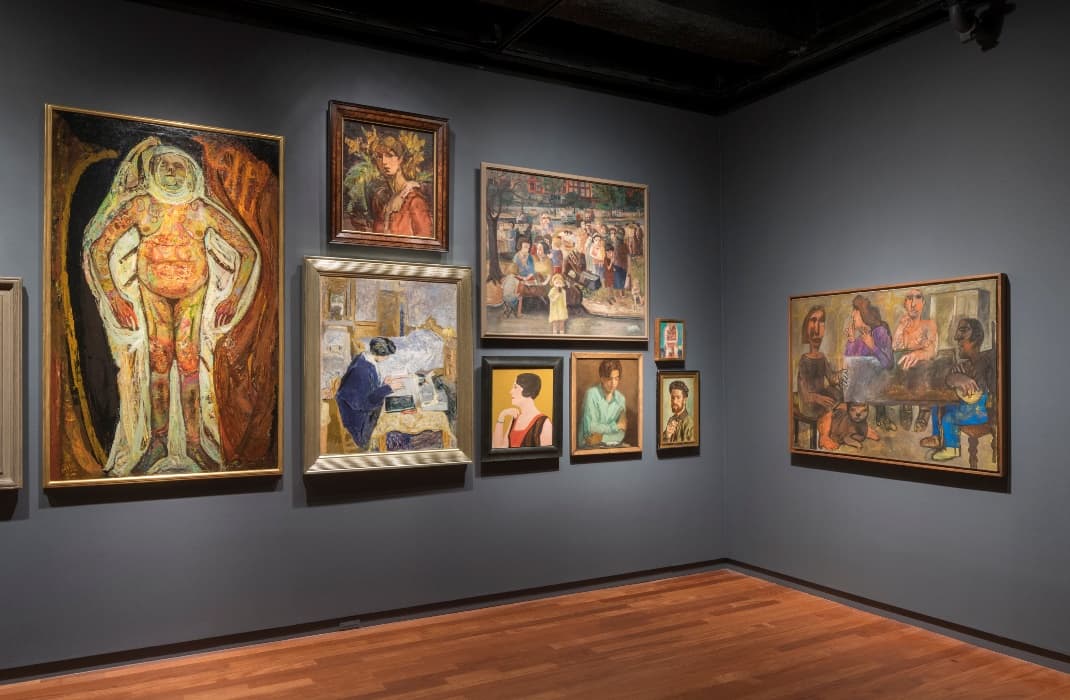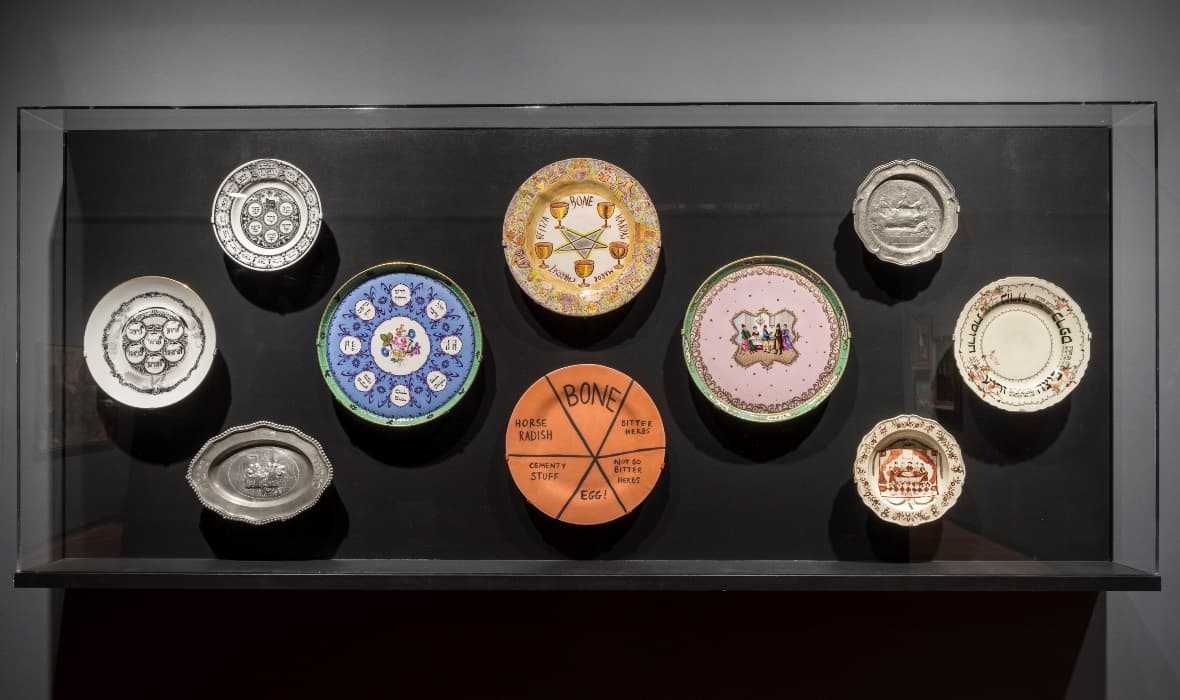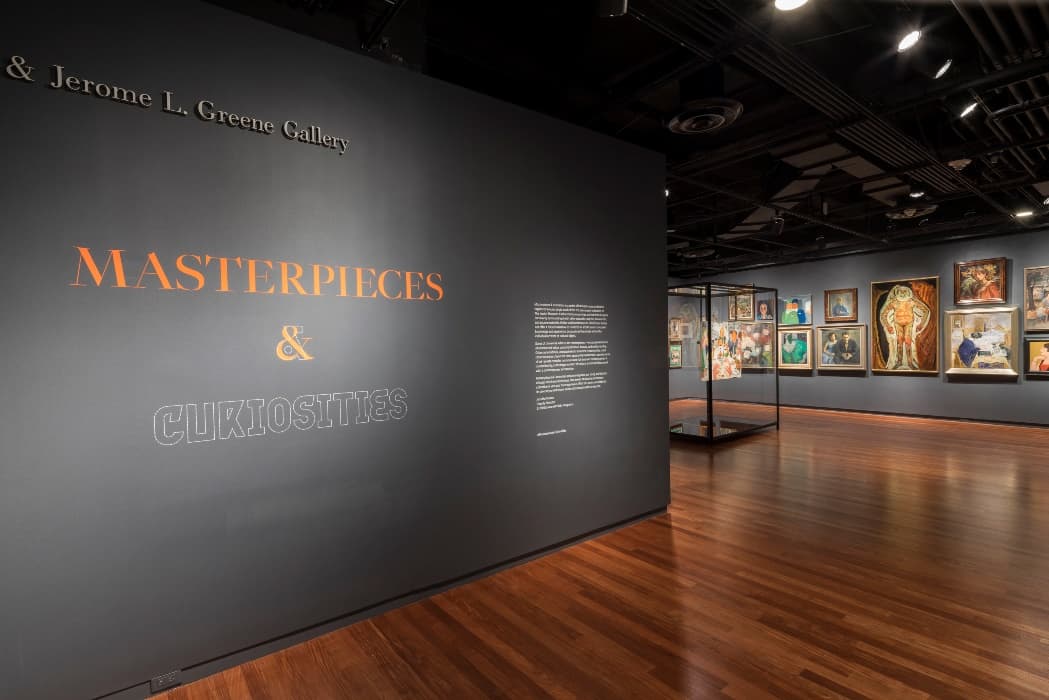Masterpieces & Curiosities: Nicole Eisenman’s Seder
A crowd has convened for Passover. Wine glasses filled, gefilte fish on their plates, the diners turn to the head of the table, where the seder leader is about to break the matzah during the ritual reading of the Haggadah. At center, the symbolic foods of the Exodus story sit on a seder plate. A glance around suggests a range of emotions in the room, typical of any family gathering.
Nicole Eisenman’s 2010 painting Seder resonates in interesting ways with the Jewish Museum’s rich collection of portraits. These paintings detail the political and social history of Jewish identity over the past hundred years through their portrayal of individuals — from the aristocrat to the anonymous burgher to the artist.
Eisenman works both within this portrait tradition and against it. Seder captures an emotional as well as a physical likeness of her friends and family, including some invented characters. Most distinctively, she places the viewer as a central figure in the Passover ritual — a strategy not seen in more traditional depictions. She illustrates universal emotions of love, anxiety, and loneliness with a touch of humor, even irony. Eisenman’s paintings are known for their macabre themes, dark humor, and canny critiques of pop culture and art history. Among her influences in Seder are the opulent Impressionist and Post-Impressionist luncheon scenes of Pierre-Auguste Renoir and Pierre Bonnard. Perhaps a hint of Norman Rockwell’s populist Thanksgiving tableau, Freedom from Want, may also be detected.
The Passover table bears a number of emblematic items: glasses of wine that are drunk at specified points in the evening as the Exodus story is retold; three pieces of matzah (unleavened bread); copies of the Haggadah for the participants; and, centrally, a plate bearing certain foods that celebrate freedom and recall the bitterness of slavery. The tradition of a special plate or basket for the seder foods originates in a reference in the Mishnah (first–second century CE), recording older customs, but there is no record of how it was decorated. In Europe in the sixteenth century, artisans began making seder plates with scenes of from the Passover story, or showing the table and its guests. In one tradition, the decoration details the order and placement of the symbolic foods. Some of these plates are explicitly intended to hold those foods; others may have had a more general Passover use.
The museum’s renowned Judaica collection includes numerous seder plates, including two created by Eisenman for this exhibition. The artist thus looks to the past as inspiration for her unique narratives of twenty-first century life, meditations on the human condition. The museum’s portrait collection comprises hundreds of works by Jewish artists or of Jewish sitters, and covers the full breadth of the genre. Moritz Daniel Oppenheim’s group portrait of a German Jewish family celebrating a seder is, in effect, a portrait of a particular time and place—as are Arnold Eagle’s seder photographs and Eisenman’s canvas.
Nicole Eisenman was born in Verdun, France, and received her bachelor’s degree in fine arts from the Rhode Island School of Design. In 2005 she and the artist A. L. Steiner cofounded Ridykeulous, an artist-run collective that focuses primarily on queer and feminist art and produces exhibitions, performances, and publications. She was awarded the Carnegie Prize in 2013. Eisenman lives and works in New York.
Masterpieces & Curiosities: Nicole Eisenman’s Seder is organized by Joanna Montoya Robotham, Neubauer Family Foundation Assistant Curator. The series is organized by Jens Hoffmann, Deputy Director, Exhibitions and Public Programs, and Daniel S. Palmer, Leon Levy Assistant Curator.
In the Press
“Seder is radiant” — Art in America
About Masterpieces & Curiosities
Masterpieces & Curiosities is a series of intimate “essay” exhibitions organized around single works from the permanent collection of the Jewish Museum. Each exhibition examines and rethinks the piece on view by surrounding it with other artworks, objects, documents, and source materials. Unlike traditional museum exhibitions, it does not offer a master narrative to reinforce an artistic canon or explain knowledge and experience, but rather explores the stories that inform the individual artwork or cultural object.
Some of the works in focus are masterpieces—recognized artworks of unmatched value, great significance, beauty, and craftsmanship. Others are oddities—unexpected and eccentric creations that merit closer attention. Even the most apparently traditional or peculiar work of art reveals complex histories and rich layers of meaning when it is seen freshly, through a contemporary lens and in the larger context of cultural and social history.
The Jewish Museum’s permanent collection is vast and heterogeneous. Masterpieces & Curiosities aims to invigorate our study and display of these objects in innovative ways, thus celebrating their diversity and discovering some of the collection’s many hidden treasures.
Jens Hoffmann
Deputy Director
Exhibitions and Public Programs
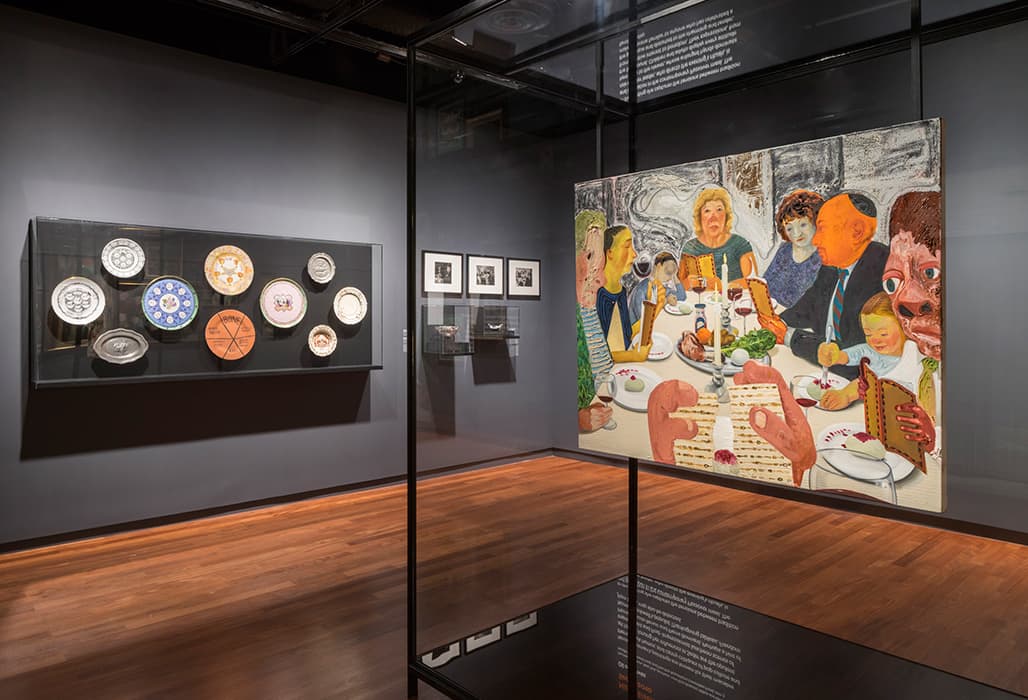
Installation view of the exhibition Masterpieces & Curiosities: Nicole Eisenman’s Seder. The Jewish Museum, NY. Photo by: David Heald.

